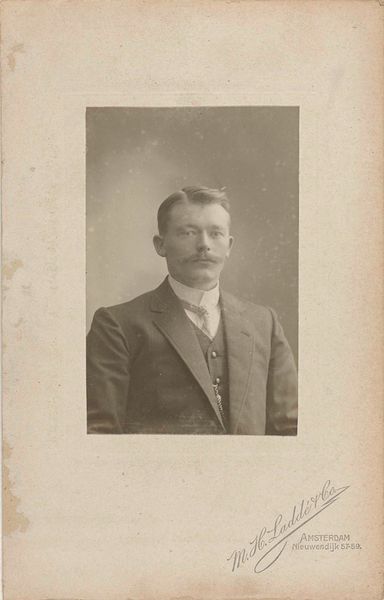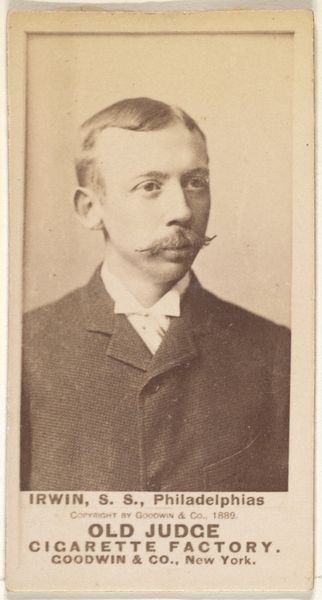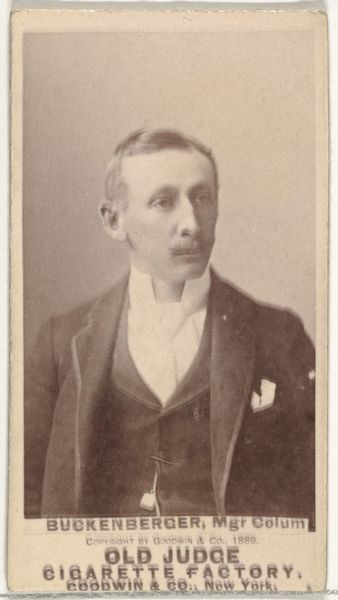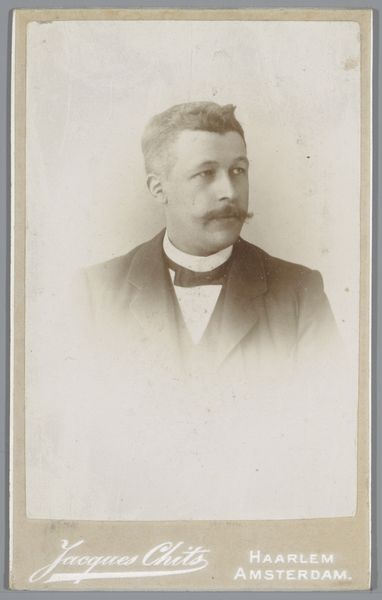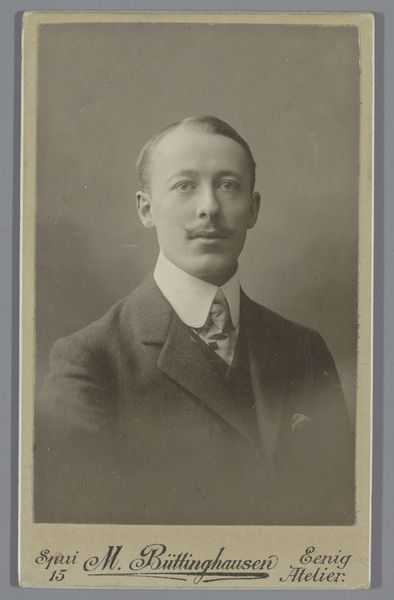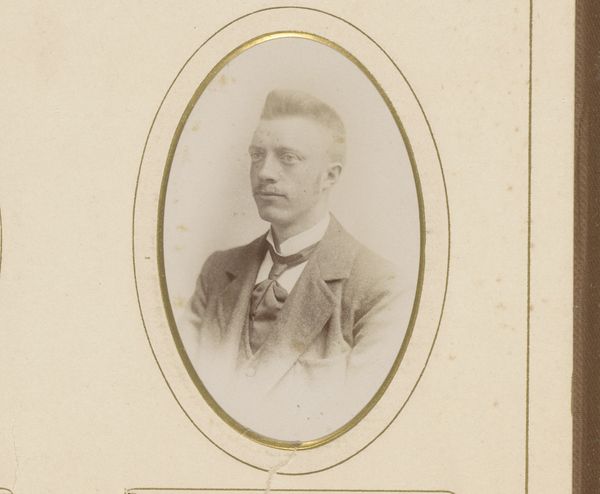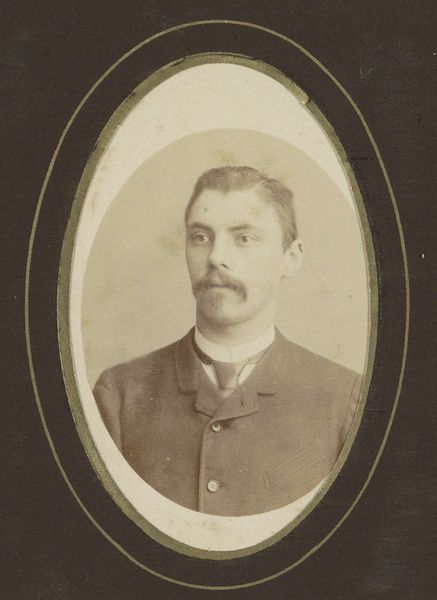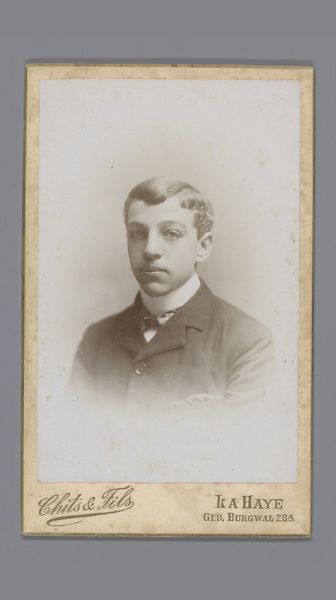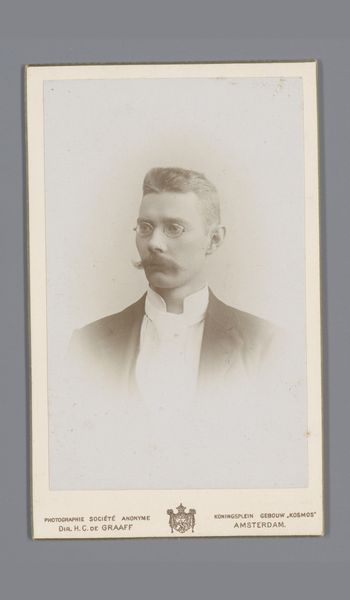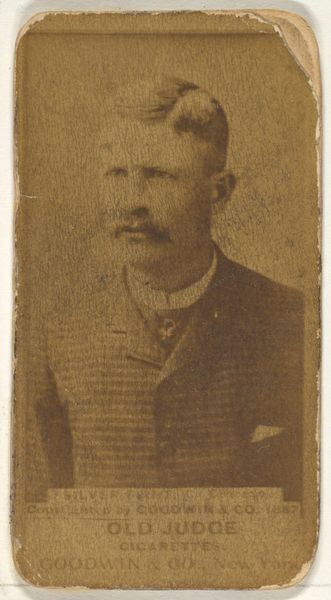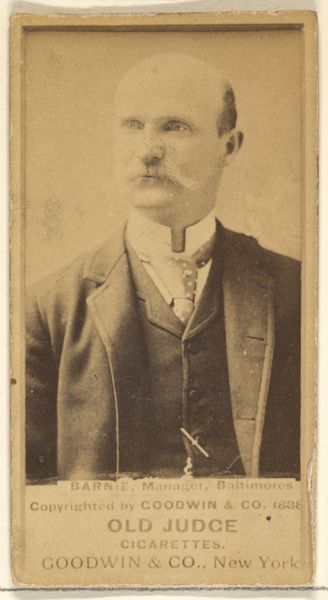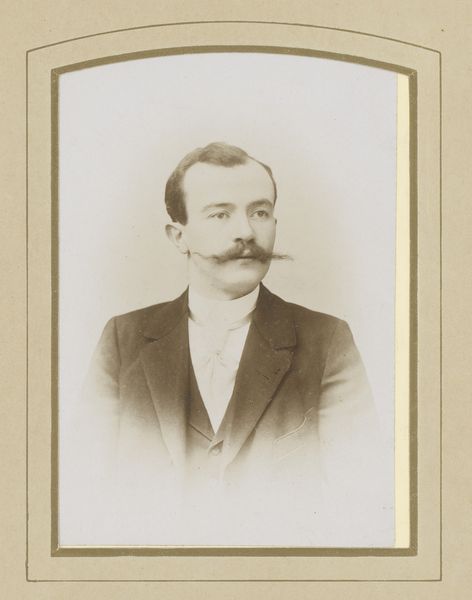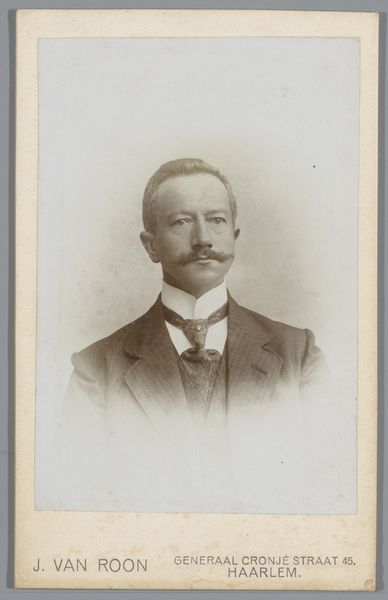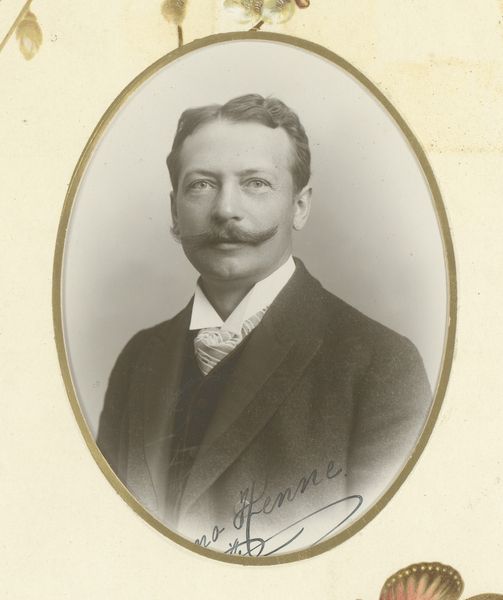
Arthur Albert "Doc" Irwin, Shortstop, Philadelphia, from the Old Judge series (N172) for Old Judge Cigarettes 1887 - 1890
0:00
0:00
print, photography
#
portrait
# print
#
baseball
#
photography
#
men
#
post-impressionism
Dimensions: sheet: 2 11/16 x 1 3/8 in. (6.9 x 3.5 cm)
Copyright: Public Domain
Curator: Looking at this intriguing print, a photographic portrait on card stock, what strikes you first? Editor: Its monochromatic sepia tone lends it an immediate sense of historical distance. The formal composition, particularly the subject's slightly averted gaze and meticulous grooming, creates an impression of reserved dignity, like a daguerreotype. Curator: This is “Arthur Albert ‘Doc’ Irwin, Shortstop, Philadelphia,” part of the Old Judge series (N172) by Goodwin & Company, dating roughly from 1887 to 1890. These were originally produced as baseball cards distributed with Old Judge Cigarettes. Editor: So the very nature of this as ephemera, tied to mass consumer culture and the emerging celebrity of baseball players, somewhat undercuts that initial impression of high seriousness. The wear and tear on the card itself speaks volumes about its journey through time. Curator: Absolutely. These cards document a pivotal moment in baseball history and commercial image-making. Irwin, a significant player of his era, gains a peculiar immortality through this association with consumer culture, with "Old Judge" stamped on the cardboard. His athletic prowess is now inextricably linked with tobacco advertising. Editor: And consider the pose. It isn't action oriented, but very deliberately composed. He's presented as a gentleman, more so than an athlete—that seems significant to shaping a particular type of hero narrative at the time. The use of photography in printed media is intriguing too. The print seems to take on some characteristics of intaglio through the application of ink, further distancing it from the present moment. Curator: I see it reflecting a wider shift in sports media. These portraits started promoting baseball's respectability and growing appeal as a professional sport, and a spectacle that brought communities together and united classes behind their home teams. It created a shared cultural language and imagery. Editor: Yes, it underscores how even the humblest commercial artifact is rich with contextual meaning. The interplay of image, commodity, and athletic celebrity creates this whole narrative, one carefully cultivated at the turn of the century. Curator: I find it quite evocative to see this piece in a museum setting. It transforms what was once a disposable item into a cultural relic to analyze, demonstrating the intersection of sport, marketing, and photography in shaping our cultural identity. Editor: Indeed, focusing on formal aspects first allowed an immediate insight to a particular type of representation of power during the period, whereas diving into history allowed more insights to the intent behind baseball player's marketing.
Comments
No comments
Be the first to comment and join the conversation on the ultimate creative platform.
